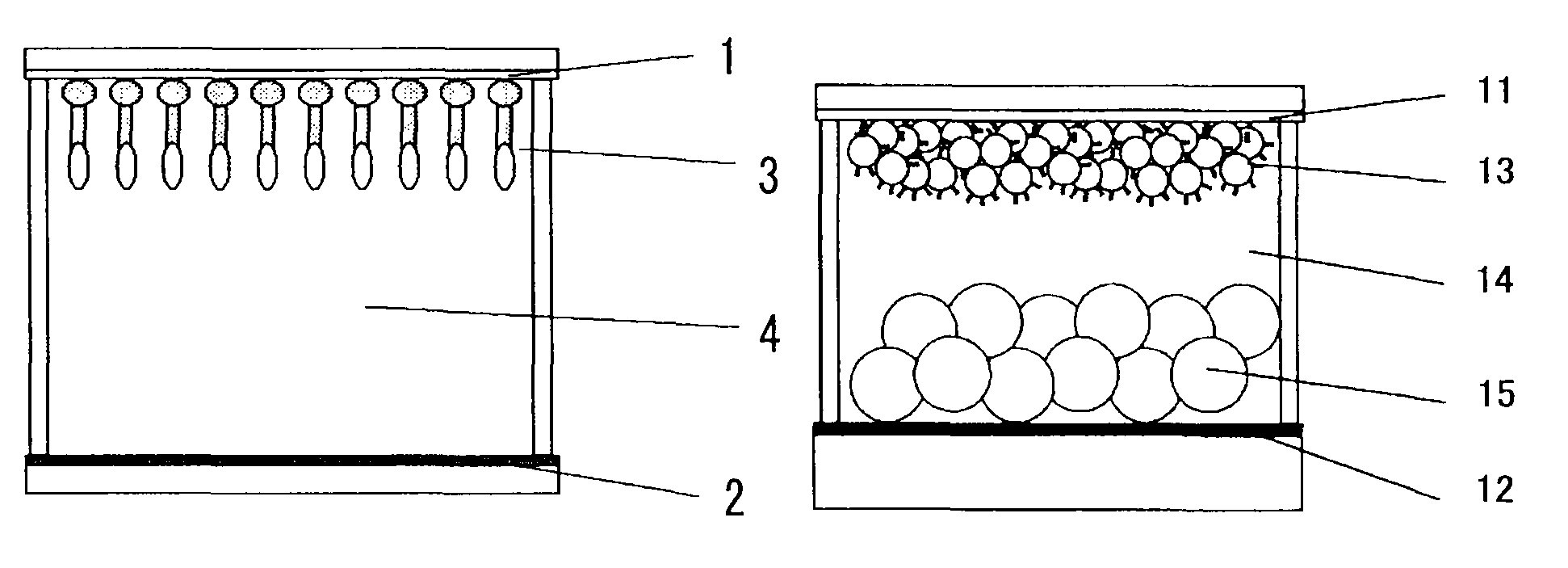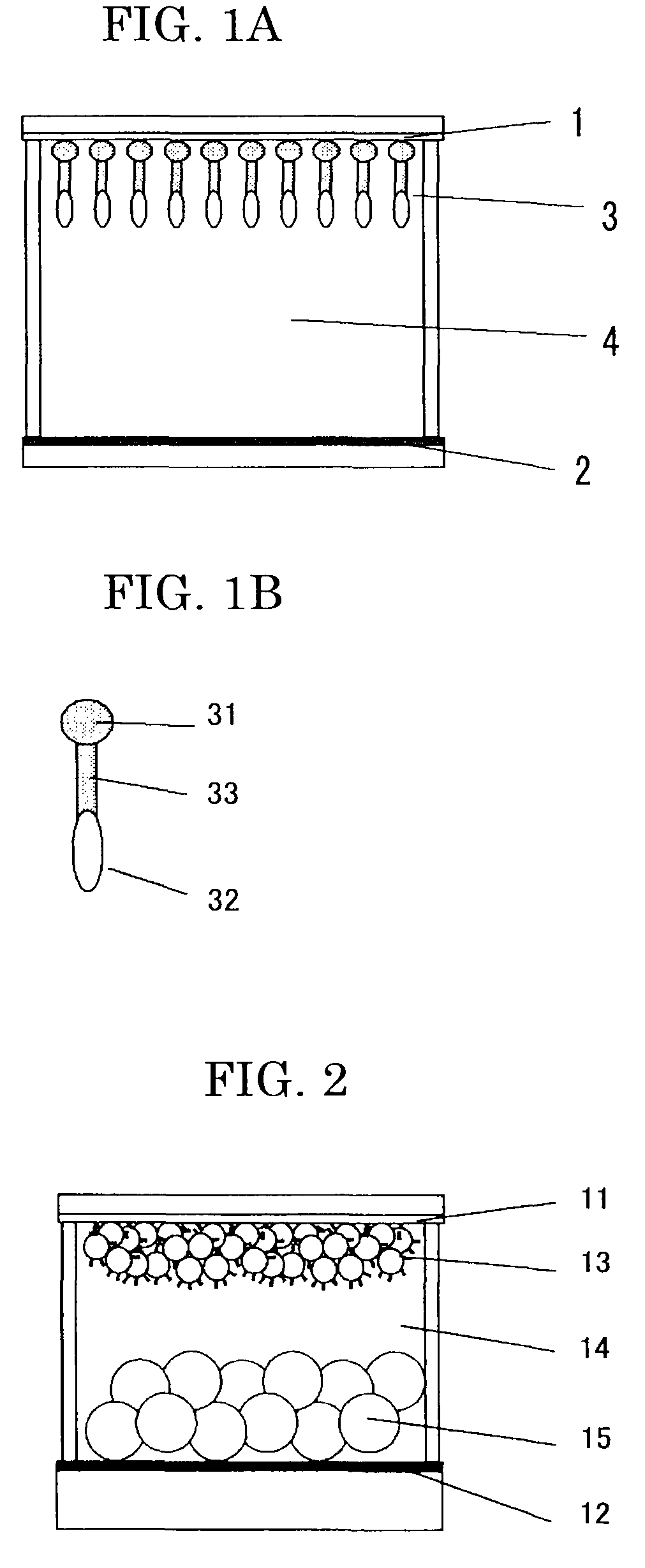Electrochromic compound, electrochromic composition and display device
a technology of electrochromic composition and compound, applied in the field of electrochromic compound, electrochromic composition and display device, can solve the problems of low light utilization efficiency, low contrast ratio, and difficult development of display device offering all of these characteristics, and achieve the effect of improving the memory performance of an electrochromic compound
- Summary
- Abstract
- Description
- Claims
- Application Information
AI Technical Summary
Benefits of technology
Problems solved by technology
Method used
Image
Examples
example 1
[0070]The electrochromic compound having the structure represented by the Formula (7) shown below was obtained according to the following synthetic process.
[0071]Bis(4-formylphenyl)phenylamine was reduced in ethanol with 2 equivalents of sodium borohydride to obtain bis(4-hydroxymethylphenyl)phenylamine. The obtained bis(4-hydroxymethylphenyl)phenylamine was reacted with equimolar p-toluenesulfonylchloride to replace a hydroxyl group at one end with a toluenesulfonyl group, and then the resultant compound was reacted with trimethylphosphite to yield a triphenylamine phosphate derivative having the structure represented by the Formula (6), as an intermediate compound.
[0072]
[0073]The compound of Formula (6) was reacted with terephthalic acid monomethyl chloride in a THF solvent, and then the phosphonic acid ester was hydrolyzed with a diluted hydrochloric acid, whereby the compound having the structure represented by the Formula (7) was yielded.
[0074]
example 2
[0075]0.2 M of the compound of Formula (7) obtained in Example 1 was dissolved in ethanol, and to the resultant solution, a glass base plate covered wholly with a tin oxide transparent electrode film was immersed for 24 hours, to adsorb the compound of Formula (7) to the surface of the electrode film, whereby a display electrode was prepared.
[0076]Meanwhile, the glass base plate covered wholly with a tin oxide transparent electrode film was placed in a 0.2% by mass aqueous solution of hexachloroplatinic acid and a constant electric flow of 1 mA / cm2 was applied for 30 seconds to deposit a platinum film on the surface, whereby a counter electrode was prepared.
[0077]The display electrode and the counter electrode were attached together by the intermediary of a 100 μm thick spacer to obtain a cell. Into the cell, an electrolyte solution prepared by dissolving 0.2 M of tetrabutylammonium chloride in dimethylformamide was poured, whereby a display device was produced.
[0078]An anode and a ...
example 3
[0082]The compound of Formula (6) obtained in Example 1 was reacted with 4,4-biphenylcarboxylic acid monoethylchloride in a THF solvent, and then the resultant phosphonate was hydrolyzed with a diluted hydrochloric acid, whereby the compound having the structure represented by Formula (9) was yielded.
[0083]
[0084]An display device was produced in the same manner as in Example 2 except that the electrochromic compound was replaced lo with the compound of Formula (9). An anode and a cathode were respectively connected to the display electrode and the counter electrode, followed by impression of a voltage of 3 V for one second. The display device produced yellow, and the coloring state continued for about 100 seconds after the impression of the voltage.
PUM
| Property | Measurement | Unit |
|---|---|---|
| particle diameter | aaaaa | aaaaa |
| thick | aaaaa | aaaaa |
| voltage | aaaaa | aaaaa |
Abstract
Description
Claims
Application Information
 Login to View More
Login to View More - R&D
- Intellectual Property
- Life Sciences
- Materials
- Tech Scout
- Unparalleled Data Quality
- Higher Quality Content
- 60% Fewer Hallucinations
Browse by: Latest US Patents, China's latest patents, Technical Efficacy Thesaurus, Application Domain, Technology Topic, Popular Technical Reports.
© 2025 PatSnap. All rights reserved.Legal|Privacy policy|Modern Slavery Act Transparency Statement|Sitemap|About US| Contact US: help@patsnap.com



